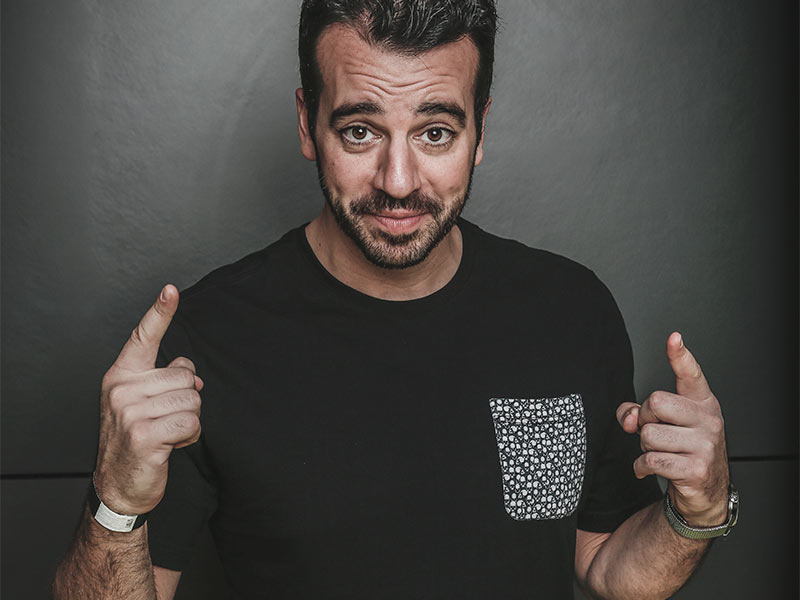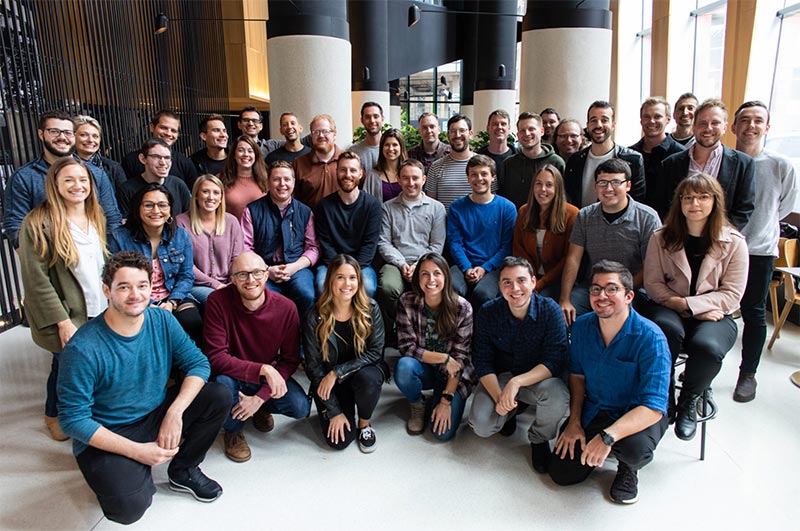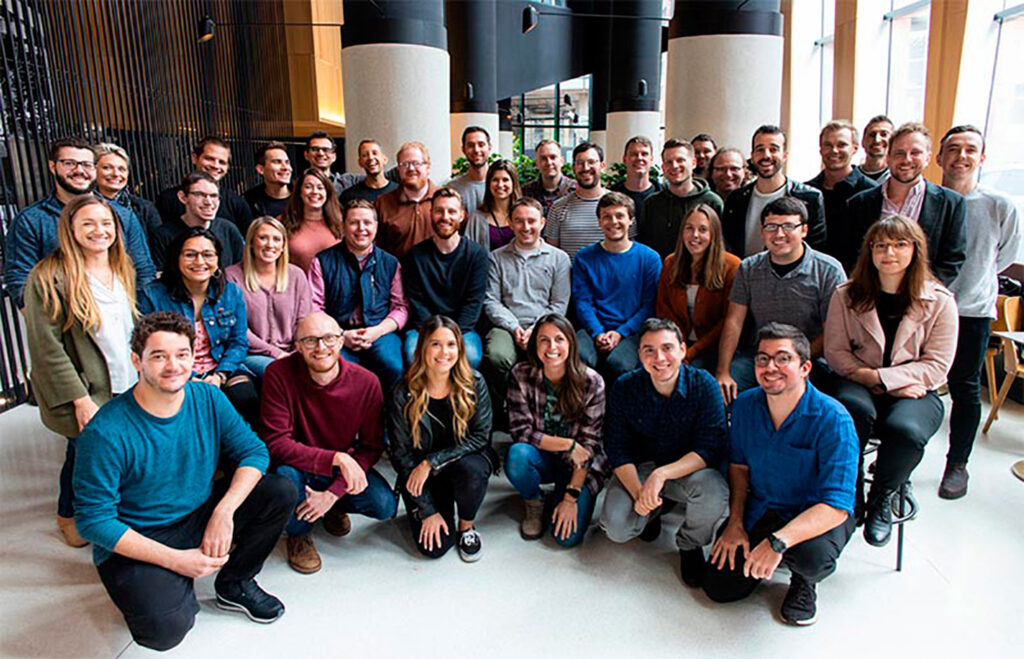When something has worked so well for so long, it can be difficult to let it go. Even though a certain way of doing things got your business to where it is today, that doesn’t mean it will get it to where you want it to be tomorrow.
Close is a SaaS CRM that helps companies scale their sales efforts and increase their revenue. But during the early stages of its own growth, a few mistakes were made and important lessons learned about the value of change and evolution as a company.
While these mistakes temporarily stunted Close’s revenue growth and caused a couple tough years in its journey to scale, the company’s now a top CRM choice for startups and SMBs.
During Close’s first three years, it operated with a team of only six people—a lean structure that really worked for them. The company grew from zero to millions in revenue and scaled in terms of user numbers and more, says Steli Efti, CEO and co-founder.

“That felt amazing. We were generating as much revenue as some of our competitors that had a hundred people, and we were six.”
But eventually, the competitive advantage of being a small, nimble team became a disadvantage for Close when it was pushed too far.
So how did the company get to this fork in the road?
The following are five main shifts in Close’s narrative, all of which led to positive changes that drove the company forward into the future.
1. Pivoting from services to a SaaS business
After discovering the concept of entrepreneurship in his mid teens, Efti was hooked and started his first company at just 17 years old.
Through a number of start-ups—some more promising than others—and a move to the United States from Germany, Efti built experience and successes that led him to co-found Elastic Sales in 2010. Unsatisfied with the CRM software available on the market at the time, the sales as a service company developed its own software to meet the specific needs of its salespeople. They named it, Close.
“We developed Close as an internal sales tool at first, never with the intention to productize it and sell it to anybody else,” says Efti. “But two things happened.”
First, while Elastic Sales was seeing success, it also had some challenges due to the ebb and flow of staff and cash flow in the services industry.
“Scaling a services business is really hard,” he says. “You keep adding more and more people to make more revenue. And there’s always this up and down where you get a bunch of new clients and then you’re like, ‘oh shoot, we don’t have enough people to do all the client work’.
You hire a bunch of people so you can do the work, but by the time it ends, you have too many people and not enough clients. We’d never gone through that at the scale that we did with Elastic.”
The second thing that happened was the company’s proprietary sales software began to get better and better. Employees were showing it off to friends who also worked in sales, and the company started getting a flurry of inbound requests.
With the pain of running a SaaS billing business, demand from the outside, and a growing belief that maybe they’d built something really strong in Close, they decided to give it a go and the product quickly grew legs.
“By the sixth month, it was quite clear to us that by the end of the year, this small piece of software with just five people working on it would make more revenue than the 45 people working on the services business. That’s when we decided we needed to shift our attention and focus and go all in on the product side of the business.”
2. Adapting for short and long-term SaaS growth strategy
The SaaS startup period is about sprinting, says Efti. It’s about building as much momentum as you can as quickly as possible to generate small results and then build on them.
“Many startups don’t succeed because they don’t follow that radical speed-focused, laser-focused approach,” he says. “When they begin, they go too broad and they never get any momentum going.”
But Close was good at this, says Efti. His small team was very fast in the beginning, and it knew exactly how to be hyper-focused, which helped the company grow quickly.
But long-term success is about finding and re-finding the proper balance between those short sprints and long-term-goal-focused activities.
In the beginning, let’s say 90% of the things you do are short-term-focused sprints and 10% is long-term,” he says. “As you grow, that scale needs to tip. Eventually, when you’re a $100M ARR company, 90% of what everybody’s working on can’t be one-week sprints. You start having to think in much longer cycles.”
So while sprinting was a definite strength for Close, tipping that scale and transitioning to more long-term-focused activities proved to be a struggle, says Efti.
For example, activities like paid ad spend can take 12 to 18 months of investing and iterating to really show promise, but at the time the team didn’t have the patience. If they didn’t see immediate returns on an activity, they moved on.
“We did this with many ideas,” he says. “We were like, ‘every company does this, every big staff business does this. Let’s try’. And when we wouldn’t see immediate results we’d say, ‘well, this doesn’t work for us’.”
Efti says they had to learn the important lesson that at a certain scale and size, you have to start investing much more time into developing new channels.
“That was the shift in our philosophy from just sprinting all the time to trying to get better at finding the balance.”
Human resources was another area where Close needed to find balance and learn to evolve.
3. Switching hiring mindset to fix a broken strategy
Circling back to when Close reached that point in its growth journey where it began to struggle with its shortage of staff and resources, Efti says it took some time to accept there was a need to hire.
“I wanted to hold onto this six-person team too dogmatically,” he says. “For a while, people on the team would say, ‘Hey, maybe it’s time for us to start hiring,’ and I would always ask, ‘Do you think we’re as effective and productive as we can be? Is there nothing else that we could do to be better, or are we just throwing people at the problem?’”
While Efti maintains this is a good question to ask, he also acknowledges it can be misused—and in this case, it was. Of course, through it all, his team would always agree that there was room for improvement, and they would endeavor to do better.
“That worked until things started to break, and they broke in really painful ways with scalability and security issues,” says Efti. “All of a sudden everything slowed down in the business. There were all kinds of fires that we weren’t prepared to deal with.”
At that point, he knew he needed to build his team and make some changes. But with the pressure on, it was obviously the worst time to do it.
Efti says he was lucky he had enough entrepreneurial experience to know it was time to take a pause.
He knew hiring too fast would be a mistake. It would have started a whole other set of fires that would cause problems down the line.
“We just had to swallow the very bitter pill and say, ‘we made a really big strategic mistake’,” says Efti. “We should have started hiring one and a half years ago.”
As a result, Close had to endure a challenging one to two-year period where it invested a lot into its hiring, and much of the innovation it wanted to do had be put on the back-burner.
We lost two years in our growth trajectory because we scaled the business without making sure we could support it with the right resources and team,” he says.
4. Continually evolving product positioning
Another mistake Close made was underestimating the evolving nature of product positioning and market fit.
“It’s not a destination,” says Efti. “It’s not something that you’ve checked off and now you’re done with it. It’s something you have to re-establish every single day.”
When the company’s software first entered the market, it had clear positioning that differentiated it from its competition. It was innovative in ways other CRM software wasn’t, and this was a definite advantage. But as time went on, competitors copied its strongest features as well as its messaging, says Efti.
“All of a sudden, we were struggling because we didn’t have enough people, and our competitors had caught up with some of the things that we had done right. That caused us some issues.”

The company pushed and grew through its challenges though, and it came out the other end with strength and powerful lessons learned.
“Obviously, if I knew then what I know now, I would have done things a little bit differently,” says Efti.
5. Leadership transformation around SaaS culture
CEOs can become overwhelmed with operational challenges during the SaaS scaling process and often under-prioritize the need for cultural evolution within their businesses. But if your business can’t attract and retain talent that will keep moving your business forward, then you’re doomed to start falling apart in other areas as well.
Moving from $5 to $10M ARR requires a strategic recruiting culture, says Efti.
Efti notes the importance of hiring a head of HR, a chief of staff, a cultural director, or whatever your company chooses to title this position as part of your SaaS growth strategy.
While this may not be the first important hire companies typically consider when it comes to their leadership direction, taking charge of the people side of business rarely gets enough attention and it’s crucial to success, he says.
“It seems like a nice to have luxury, but the reality is companies are collections of humans, and humans have emotions, problems, and limitations. Culture matters more than anything else. Culture is the DNA that will determine how your business grows. Hiring somebody early on that will always think about this and champion these topics can pay massive dividends. It definitely did for us,” says Efti.
Efti says that of the last ten senior hires made at Close, every single one of them mentioned his director of people as a reason why they chose to join the company. This individual showed them how important culture is at Close and made them feel like it’s a company that cares and that they want to be a part of in the future.
Today, Close has a growing staff of 45 people working remotely from 17 countries, and a lot has changed within the company. While there was a lot of scrappiness, hustling, and hacking away in the early years, a maturation process has occurred, and the team no longer holds onto anything that doesn’t serve them.
By embracing the need for change and evolving its processes, strategies, and culture in line with where it is now and where it wants to be, Close continues to not only be a top performing company in its space, but also a company that people want to work for and grow with.
“You can get by with grittiness and intuition to $5M, but from $5 to $10 to $20M, you’re going to have to have very strong leadership,” says Efti. “To accomplish that, it has to become a bigger focus and time investment.”





